• Chuba Hubbard was a fantasy starter at the end of last season: Hubbard was RB11 over the last seven weeks of the year thanks to a league-leading 134 carries during that time.
• Jonathon Brooks is still injured: Brooks was placed on the non-football injury list before training camp, and as of the start of August, he’s still on that list.
• Dominate fantasy football season with promo code PFF25: Unlock all of PFF's fantasy content and tools, including full access to the fantasy football mock draft simulator, for 25% off using promo code PFF25.
Estimated Reading Time: 5 minutes
The fantasy football player profile series gives the most in-depth view of a player using the best data points at PFF’s disposal. We will look at how well the player has performed, the player's competition for touches and how teammates and coaches will impact the player's performance.
Last updated: 7:15 a.m. Tuesday, Aug. 6
Player Performance
The Panthers selected Hubbard in the fourth round in 2021, and he surprisingly led the backfield in offensive snaps as a rookie. Christian McCaffrey was expected to be the starter, but he played only four full games and three partial games that season. Hubbard was able to carve out a larger role than Ameer Abdullah and Royce Freeman, leading to 10 carries per game and 10 routes per game.
McCaffrey was back for the first six games of 2022 before getting traded to the San Francisco 49ers. Hubbard played 31 of a possible 350 snaps in those outings. After the trade, he split time with D’Onta Foreman, where Foreman was the primary early-down back and Hubbard the passing-down back.
The Panthers' backfield went through another makeover for 2023 with the addition of Miles Sanders and the departure of Foreman. Hubbard eventually became the feature back, handling at least 64% of his team's offensive snaps in each of his past seven games. He finished at least RB28 or better in those contests, including two weeks as a top-12 running back.
His efficiency numbers have never been great, but he has put up decent grades in each of the past two seasons. The Panthers did earn a below-average team run-blocking grade last season, too. Hubbard has generally played OK in ideal situations but is in the bottom 20% of running backs when situations aren’t ideal or on gap run plays. As a receiver, he’s consistently been average to below average.
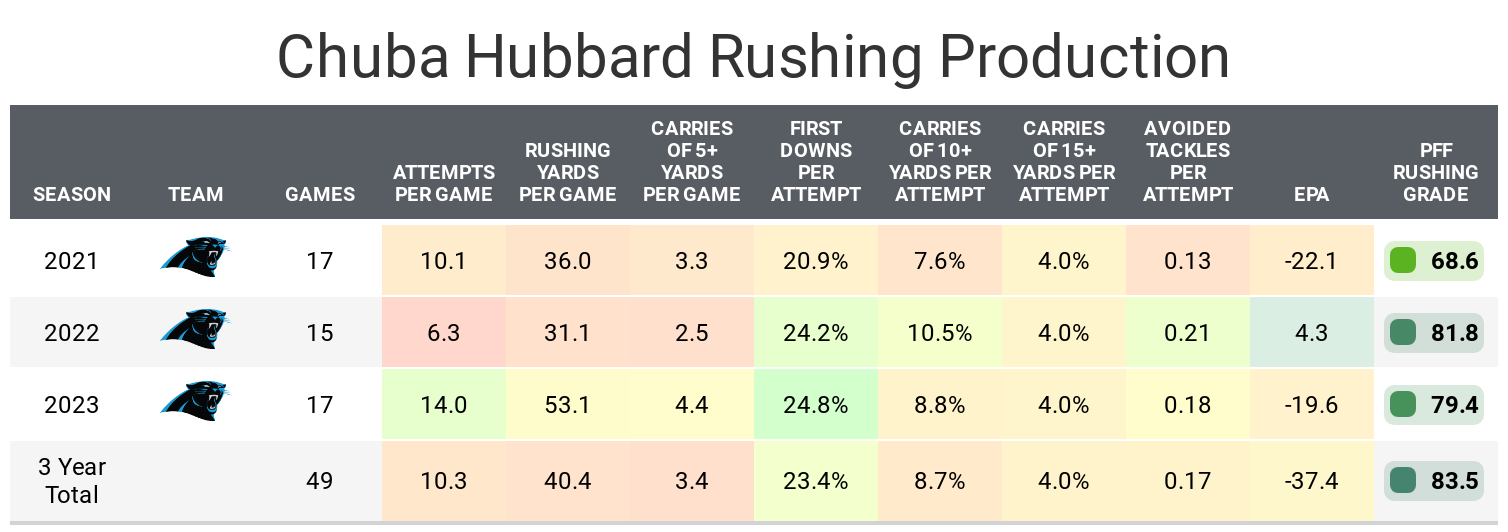
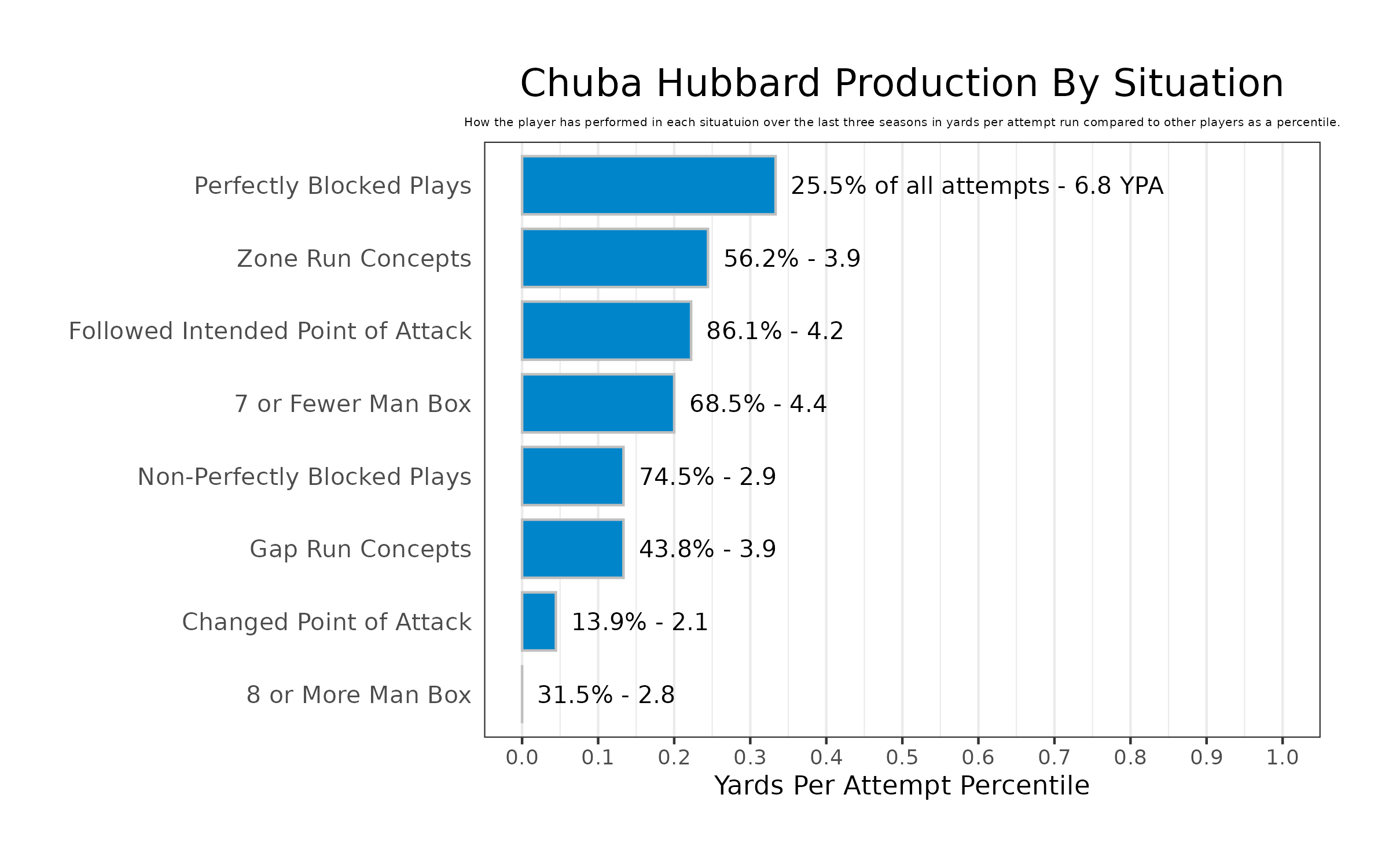

Competition for Touches
The Panthers added Jonathon Brooks in the draft, which will hurt Hubbard’s long-term fantasy prospects. Brooks is coming off a torn ACL, and it was reported a few weeks ago that he still has a ways to go in his recovery and will likely be eased into training camp. As of the start of August, Brooks was still on the active/non-football injury list.
Hubbard has a decent chance to start early in the season, and the Panthers shouldn’t rush Brooks, which could leave Hubbard at the top of the depth chart for most of the season.
The other big concern for Hubbard is Miles Sanders. The Panthers have a new coaching staff that could view the backs differently than the previous staff. Sanders has been getting at least some work with the first-team offense in training camp. The backfield could be split until Brooks is ready, and Sanders may even become the top player on the depth chart at some point.
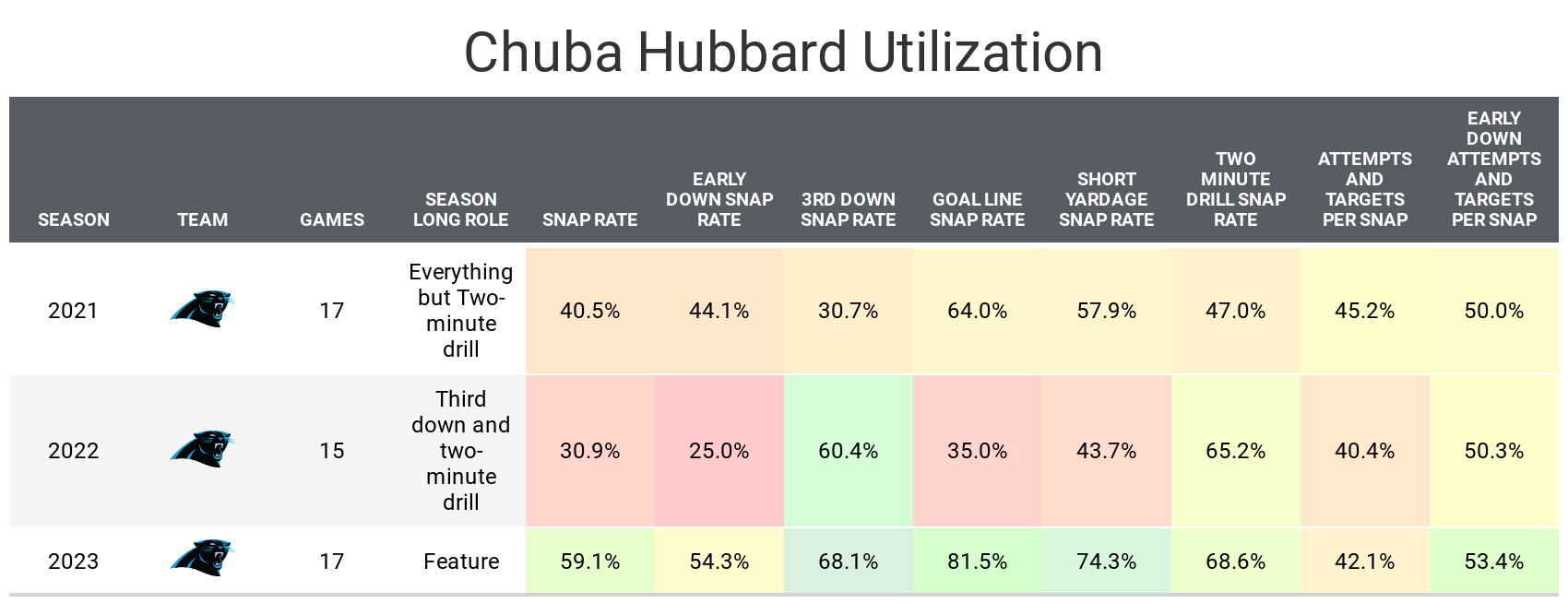
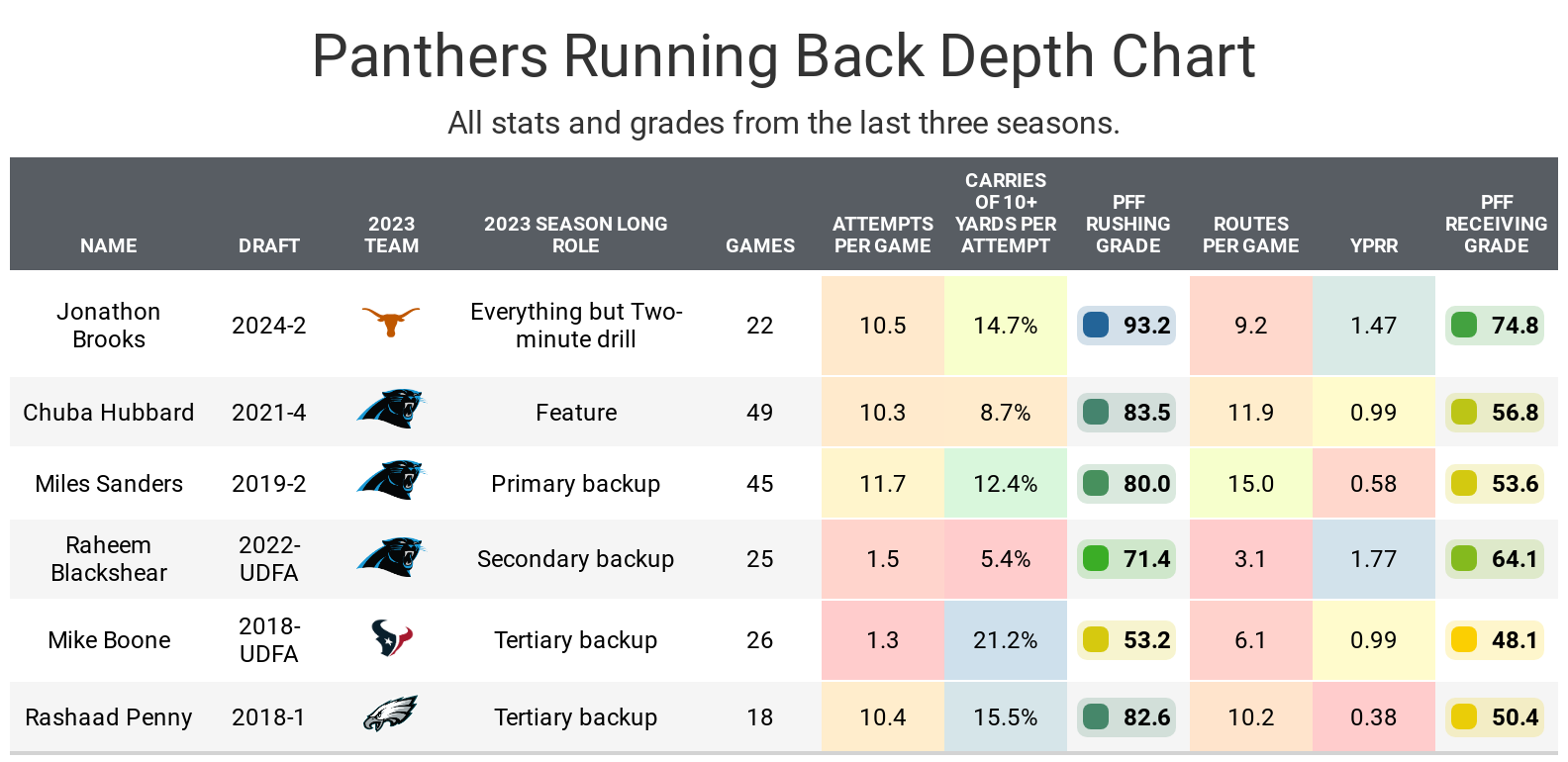
Impact of Teammates
Panthers head coach Dave Canales is also a plus for Hubbard. The offenses he’s been a part of have produced fantasy starter seasons from Rachaad White, Kenneth Walker III, Chris Carson and Marshawn Lynch. Some of those running backs have been more talented than others, yet they’ve still received plenty of opportunities. If Hubbard can hold off both other running backs, he could have a tremendous opportunity.
The Panthers had the fifth-worst run-blocking grade last season, but ideally, that changes this year. They had 10 different players take at least 70 snaps at guard or center last season, and Austin Corbett is the only one penciled in to remain a starter. He’s moving from guard to center after the Panthers added Robert Hunt and Damien Lewis early in free agency. This should make the line a little better and more stable for 2024, but it will ultimately still be a below-average run-blocking unit with no clear stars.
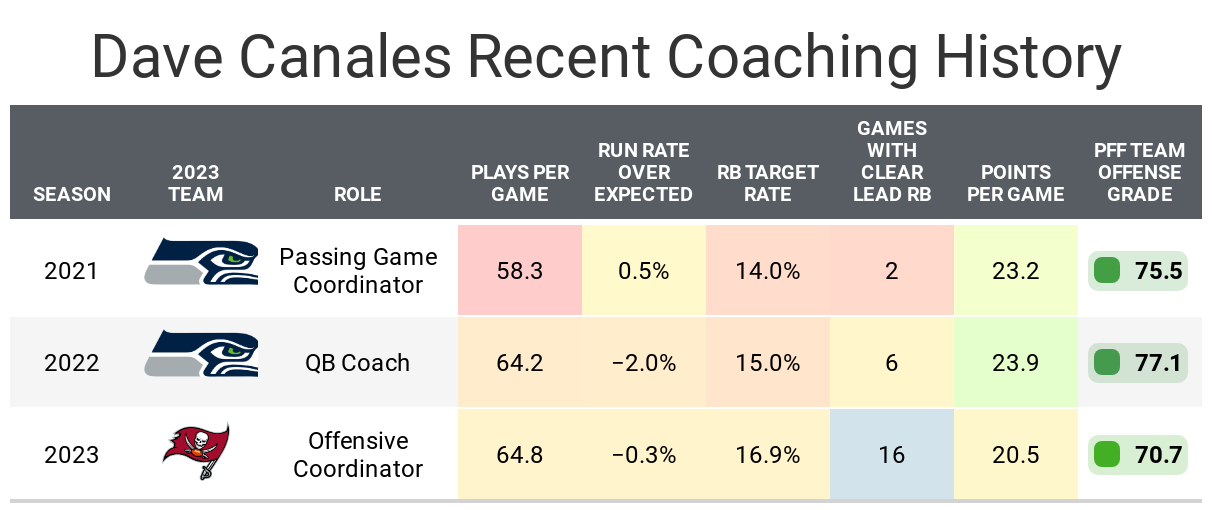
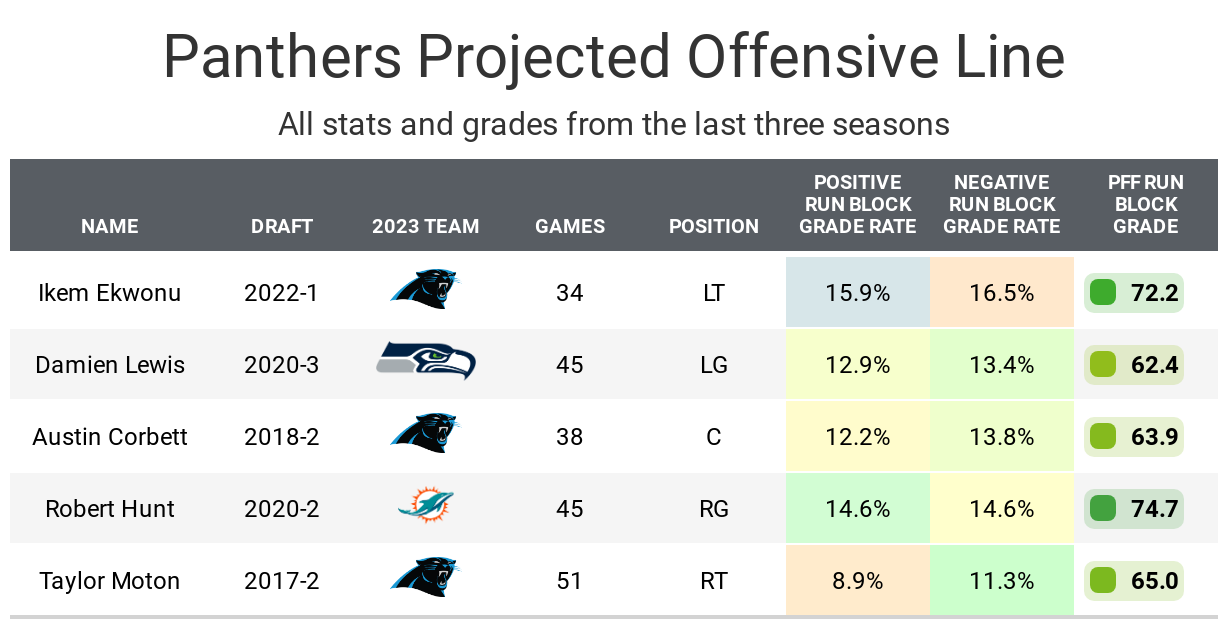
Bottom Line
Hubbard showed late last season he could be a fantasy starter more often than not, as long as he has volume. While he is rarely a top-12 running back, there is at least a path to him seeing that amount of playing time again. His ADP is RB47 — around a lot of running backs who are either handcuffs or part of clear committees where they won’t be the main guy. The fact that he has a path to being a Week 1 fantasy starter without any new injuries makes him an intriguing late-round pick, even though he’s not going to win anyone their league this year.

Footnotes
- Statistics for the tables and charts were generally chosen based on their ability to predict future fantasy performance on either per game or per opportunity basis, or chosen for their ability to describe the player relative to other players at the same position.
- Opportunities for this purpose are defined by passing dropbacks, rushing attempts and receiving routes run.
- Numbers are either by season or based on the last three years. For rookies, only college numbers are included. For non-rookies, only NFL numbers are included even if they played in college in the last three years.
- Because college competition is relatively easier than NFL competition, it can be expected that most rookies see a decline in their numbers compared to their historic numbers.
- For all of the tables in this article, colors range from blue (good or high) to red (bad or low).
- All percentiles or colors are comparing the given player to other players with a high sample of opportunities. Generally, it’s one-third of the possible opportunities given the sample. If the player in question doesn’t have enough opportunities, they are still compared, even though a player could look really good or bad on that small sample size which might not be as predictive.
- Information on running back utilization classifications and importance can be found here, wide receiver here and tight end here.




 © 2024 PFF - all rights reserved.
© 2024 PFF - all rights reserved.